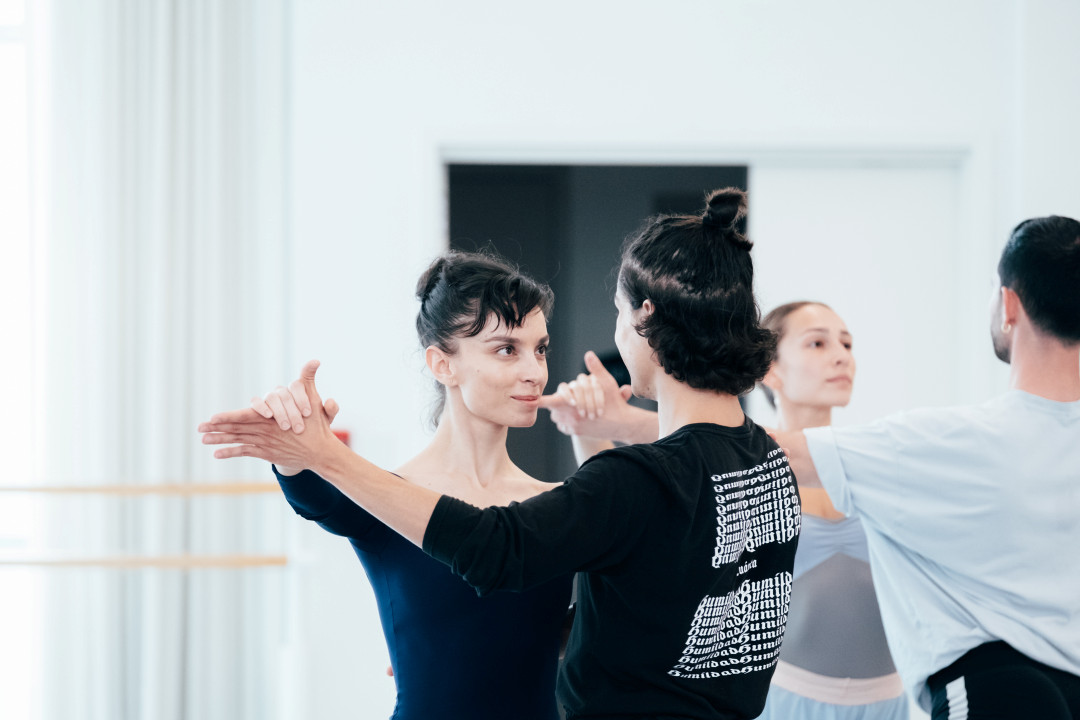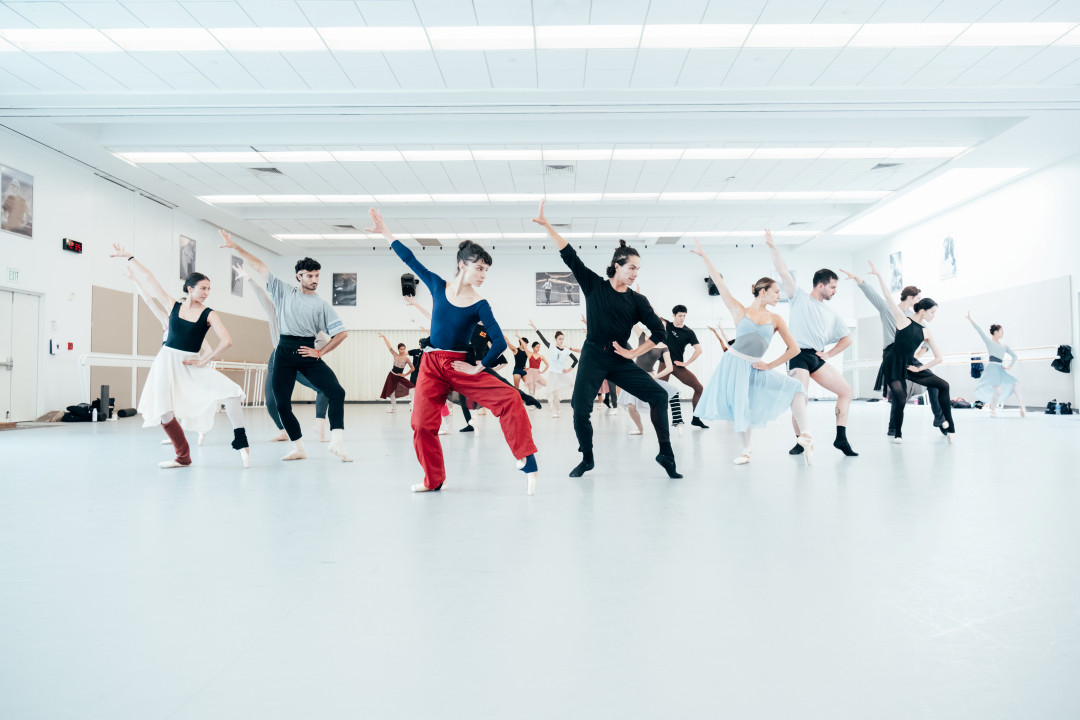Dutch Tradition Comes to San Francisco
A Deep Dive into van Manen’s Style and Process
This Season, Tamara Rojo has curated an evening dedicated to the works of celebrated Dutch choreographer Hans van Manen. We sat down with stager Rachel Beaujean who was in our studios last month setting all four works, including the SF Ballet premiere of 5 Tango’s.
SAN FRANCISCO BALLET: Can you share a bit of background Hans van Manen?
Rachel Beaujean: Hans van Manen is one of the living most important choreographers of this time. He's certainly the most famous in Holland, but also abroad, because his works are performed all over the world. His work is very much alive. He's created 150 ballets in his career. He's 92 and still very alert.
He was the director of Netherlands Dance Theater for 10 years, was the house choreographer for the Dutch National Ballet and Netherlands Dance Theater, and is still a resident choreographer at the Dutch National Ballet. While he doesn't choreograph anymore, he still works with the dancers as he comes to the premieres. He's very much part of the company. He is also the patron of the Dutch National Ballet School.

SFB: Tell us a bit about his style.
RB: There's lots of movement in his work. It's very earthy and grounded. He doesn't want much difference between men and women, it's about people. He's very interested in the emancipation of people. And gay people, in particular... If you look back at how old his works are, it's quite revolutionary, and things are still applicable for today's audience. They don't look old-fashioned. His works look modern. They still feel fresh.
SFB: What is his creation process like?
RB: He's been told many times by the musicians how musical he is...he is self-taught because he doesn't read music. So he feels it. And you actually see his music through his ballets. The choice of music is beautiful always, and it is very important for him.
He knows the music by heart. But the steps he creates with the dancers. For instance, in my case, he came in and he tried some things. And he's such a good dancer. So you want to copy him being able to do what he can do so well, the timing and the musicality. And then he goes, “Well, no, keep that and do this. And that was good.” You make a mistake. He uses it. So it's like a back-and-forth of trying things out and both sweating and dancing around the studio.
And of course, he makes the ballet. But, the dancers are very involved, and it's so nice when dancers now do the ballets that already exist, there's always room for personal interpretation within the given frame. So you always feel like you can contribute something which is exciting.








SFB: How has it been setting these works here at SF Ballet?
RB: The dancers of San Francisco Ballet know how to move. I think American dancers in general or American companies, because we have people here from all over the world, are interested in taking risk. It's also due to Balanchine and his legacy. And that's fun to work with. The SF Ballet dancers are loving it. They're going for it.








